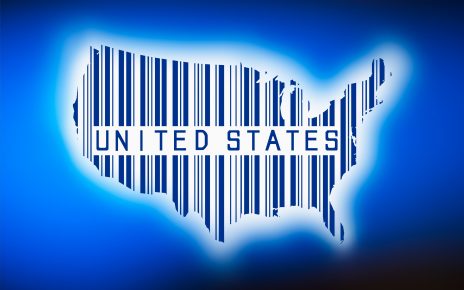The COVID-19 pandemic has rendered the behavior of most Americans unrecognizable. Handshakes have turned into elbow bumps. School and work are conducted remotely. Socializing happens virtually. And now even our faces are becoming nearly unrecognizable as we don a mask in order to go out.
Outside of an operating room or a bank robbery, masks are not the norm in Western countries. At times, face coverings, whether women’s veils or bandanas worn by demonstrators, have sparked outright bans. In some parts of the U.S. during the pandemic, the requirement to put on a mask has brought about political protests, arrests and even violence. A security guard in Michigan was killed after telling a customer to put on a mask. Even for the large majority of Americans who are willing to follow public health guidelines, masks have been an adjustment. They can be hot and uncomfortable. They impede communication and cover identifying features in a way that gloves do not. They feel, well, weird.
But weird behaviors can become standard, and long-standing customs can change, behavioral scientists say. Half a century ago the idea that dog owners should pick up their pet’s waste was so controversial that in New York City one prominent figure in the debate had a plastic bag of droppings thrown in her face at a public meeting. Yet pooper-scooper laws are now in place in cities large and small. Once upon a time, when buying an airline ticket or booking a table at a restaurant, travelers had to choose between the smoking and nonsmoking sections. Today in most of the U.S., there is no such thing as a smoking section.
To bring about such change, a new behavior must first ascend to the status of a social norm. Norms include both the perception of how a group behaves and a sense of social approval or censure for violating that conduct. “The critical thing to lock in that norm is that you believe that other people expect you to do it,” says behavioral economist Syon Bhanot of Swarthmore College. That expectation already exists in places such as hard-hit New York City, where those without masks are sometimes berated.
The point is that masks do not just protect the wearer, they protect others. Such community-minded thinking fits with collectivist cultural norms in some parts of Asia, where masks are routinely worn when one is sick—and where there is more experience with serious epidemics. Even in the more individualistic U.S., protecting others can serve as a powerful motivator. In an effort to determine what message would encourage doctors to improve their handwashing habits, a study found that signs near hospital sinks reminding them to protect patients by washing their hands were more effective than ones reminding them to protect themselves.
Similarly, the first wave of evidence about the harms of smoking focused on damage to the smokers themselves and had no effect on smoking in public spaces. People thought individuals had “the right to harm themselves,” says psychologist Jay Van Bavel of New York University. “It really started to change once we realized the consequences of secondhand smoke. Do you have a right to damage kids at school, your colleagues at work or the staff at a restaurant?” So far 28 states and Washington, D.C., have said the answer is no and passed comprehensive smoke-free-air laws.
“Social norms can change rapidly,” says social psychologist Catherine Sanderson of Amherst College, “and it doesn’t take everybody.” In an online experiment conducted by researchers at the University of Pennsylvania, subjects engaged in social coordination to assign names to an object. The tipping point for achieving enough critical mass to initiate social change proved to be just 25 percent of participants. “They become the social influencers, the trendsetters,” Sanderson says. “You get this sweep.”
Leadership is critical, however, which is why behavioral scientists were so alarmed by the recent examples of Vice President Mike Pence and President Donald Trump refusing to wear masks during public appearances. “They are the primary people who are setting norms, especially when it’s on television or in the news,” Van Bavel says. Those politicians are flouting the advice of their own public health officials. In early April the Centers for Disease Control and Prevention officially recommended “wearing cloth face coverings in public settings where other social distancing measures are difficult to maintain.” It did not help, however, that the new recommendation conflicted with earlier statements from officials suggesting that masks were ineffective or should be left for medical professionals, who needed them more.
The promask message has become more consistent just a few weeks later. Multiple studies show the benefits of masks. One from statistical researchers at Arizona State University found that if 80 percent of the population adopted even only moderately effective coverings, the practice would prevent as much as 45 percent of projected deaths in New York State and reduce fatality numbers by up to 65 percent in Washington State. Absent virtuous role models at the national level, state, local and private institutions, as well as celebrities, have begun to exert their considerable power to bring about change. “People are putting pictures of themselves in masks as their profile pictures,” Bhanot says. Airlines and universities are requiring anyone who boards a plane or comes on campus to wear a mask. “As that gets scaled up to all elements of society, you will have greater compliance,” Van Bavel says.
Barriers remain. The politicization of masks in the U.S. might mean that some areas of the country will never adopt them entirely. And endemic racism has led some young black men to fear that they will be mistaken for criminals if they wear masks in stores.
Once masks become the norm in most places, however, donning them will not seem odd or alarming, says psychologist Alexander Todorov of Princeton University, who studies facial expression. “People compensate. When they meet on the street, there is more gesticulation. People engage in strategies to make sure that they’re being understood.”
In truth, the adoption of masks is happening at a surprising pace. “The vast majority of people have, in a period of a few weeks, completely changed their habits in radical ways,” Van Bavel says. “In a year or three or five years, it might be more normal during flu season to see Americans or people from Western Europe wear masks. This might be what changes the norm.”
Read more about the coronavirus outbreak from Scientific American here. And read coverage from our international network of magazines here.




